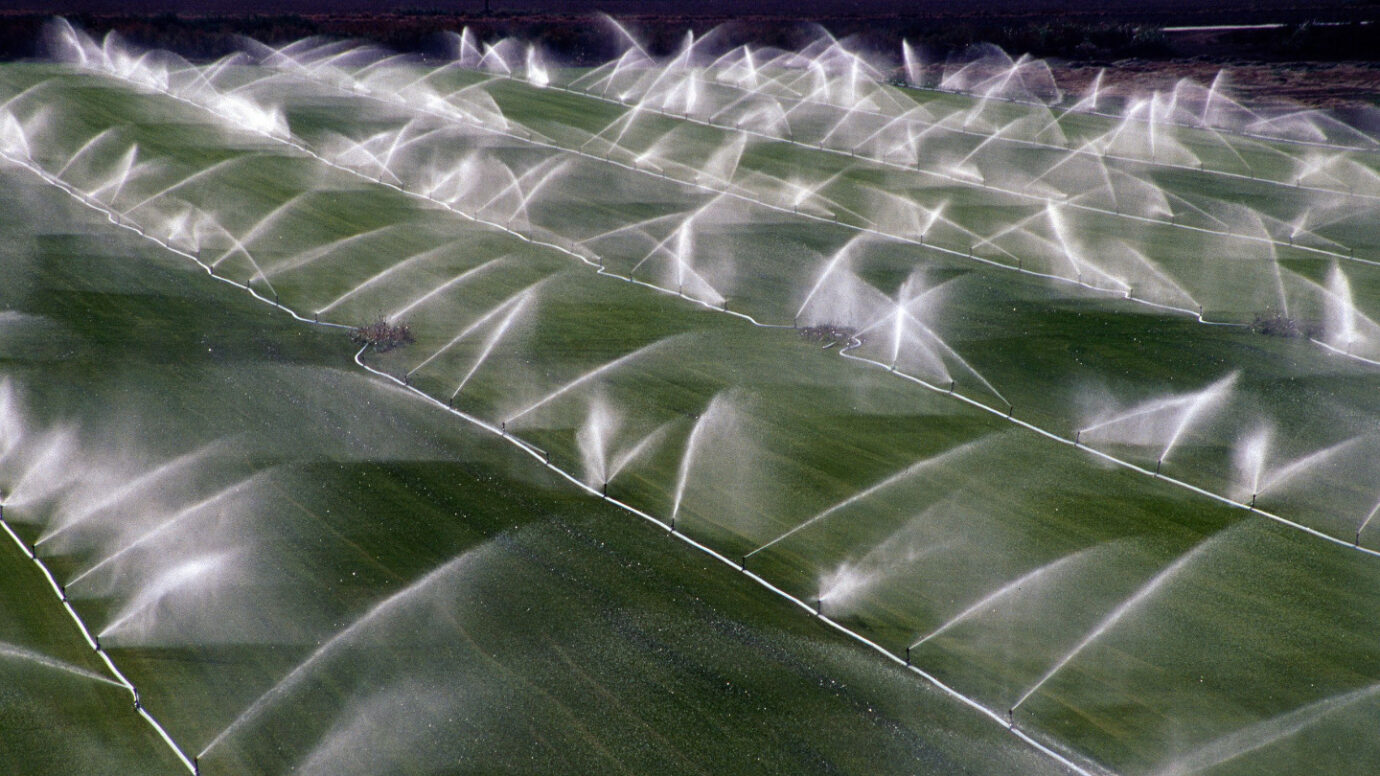From 1993 to 2010, irrigation helped nudge the North Pole toward eastern Greenland
Runoff from irrigation has moved so much water from land to sea that Earth’s rotation might have measurably shifted.
Computer simulations suggest that from 1993 through 2010, irrigation alone nudged the North Pole by about 78 centimeters, researchers reported in the June 28 Geophysical Research Letters. That would make irrigation the second largest contributor to polar drift after the ongoing rebound of Earth’s surface following the retreat of glaciers since the last ice age.
Researchers have long known that the North Pole wanders across the Arctic seascape in a circle a few meters in diameter. Seasonal weather patterns cause part of this cyclical drift, and long-term variations in the temperature and salinity of ocean water help drive a 14-month-long oscillation dubbed the Chandler wobble (SN: 4/15/03).
But those repeated vacillations aren’t the only things that move the pole around, says Clark Wilson, a geophysicist at the University of Texas at Austin. There is also a subtler, noncyclic polar drift caused by the movement of land-based water to the sea from melting glaciers worldwide and from ice sheets in Greenland and Antarctica, he says.
Runoff from irrigation also plays a role — and a surprisingly large one at that.
In the first study to try and tease out the contributions of these water movements, Wilson and colleagues used computer simulations to assess how the impoundment of water behind dams, glacial melt, irrigation and several other factors might affect polar drift. Previous studies have suggested that irrigation shifted about 2 trillion metric tons of water from land-based aquifers to the oceans from 1993 through 2010 — enough to raise global sea level more than 6 millimeters.
Although seemingly minuscule, that redistribution of water was enough to shift the North Pole just over four centimeters each year on average during that period, the team found.
When all sources of water movement are considered — including the runoff of meltwater from the Greenland and Antarctic ice sheets — the North Pole drifted about 1.6 meters toward the east coast of Greenland in that time. The impact of irrigation was mostly to nudge the pole generally east of where it would have gone otherwise, the team found. Without irrigation, the pole would have drifted nearly the same amount, but toward the center of Greenland instead.
Unlike other drivers that vary over the course of a year, Wilson says, the polar drift due to irrigation is permanent and probably growing each year.
“The team’s findings all make sense,” says Jay Famiglietti, a hydrologist at Arizona State University in Tempe. “It’s important to realize that water is heavy, and when it moves around it’s going to affect Earth’s rotation.”
Besides shifting the North Pole, large-scale irrigation can also affect local and regional climates. Studies have shown that irrigation cools temperatures and boosts humidity in California’s Central Valley, as well as increasing rainfall in the Four Corners area of the American Southwest and enhancing flow volumes in the Colorado River (SN: 1/22/13).



Recommended Comments
There are no comments to display.
Join the conversation
You can post now and register later. If you have an account, sign in now to post with your account.
Note: Your post will require moderator approval before it will be visible.